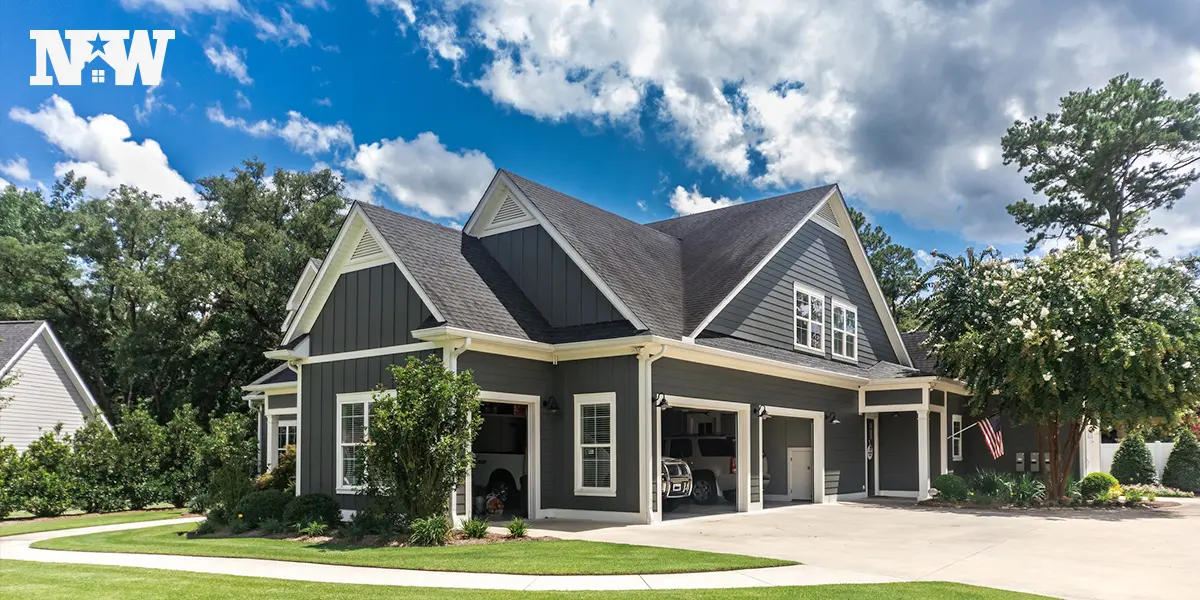Unless you’re a natural wordsmith, you might not understand precisely how vital creative real estate listing descriptions examples are when learning how to create your descriptions.
Think about it… 90% of homebuyers begin looking at houses online. They’re zipping through listings and barely glancing at the descriptions, especially listings that are bland and only list the basic features of the home.
They’re more interested in looking at the photographs than reading room dimensions or how many bathrooms there are.
Your real estate listings should tell the viewer a story. The story needs to grab the buyer’s attention and keep it. You aren’t crafting a novella — you’re writing with purpose. That purpose? To sell real estate, of course.
This article will reveal the best ways to draw inspiration from generic real estate listing description examples so you can create a listing description that can’t be ignored.
Join Now
Why Care About Creative Real Estate Listing Description Examples?
We all know the saying, “A photo is worth a thousand words.” A real estate listing description is your chance to give life to the photographs. It’s your chance to put the property’s best aspects into words and highlight other features buyers may appreciate.
In short, think of it as another tool in your marketing arsenal.
The Essentials of Creative Real Estate Listing Description Examples
How many times have you tried to write a compelling description of one of your listings and experienced a bad case of writer’s block? It’s probably happened more often than you’d like, but it’s nothing to be hard on yourself about.
Writer’s block is a common phenomenon; approximately 24% of students said they experienced this almost all the time.
One of the keys to writing a good description is knowing what does (and doesn’t) work. To create a listing description that sells, it must follow these five rules:
Format the description appropriately.
Stay away from words that issue red flags to buyers.
Mention unique features, brands, and latest upgrades.
Avoid certain words and phrases
Be mindful of length, grammar, and the descriptions’ honesty.
1. Proper Format for a Listing Description
Formatting is necessary because buyers should be able to read the listing description easily and will be able to digest the information without getting overwhelmed. There are some listing sites where you’re only allowed so many words, so you’ll need to be mindful of how flowery your description is while making sure it’s still concise and appealing.
As you’re going through all of the home’s features and highlighting the best parts, you need to put the selling points in order — not just in terms of what’s important to buyers in your area, but to coincide with the photographs on the listing.
You don’t want your listing to go on and on about the backyard, the new deck, and upscale landscaping when the first few photographs are of the updated kitchen and family room.
Include an Attention-Grabbing Headline
Your headline should be a short, to-the-point description of the house while mentioning a benefit of the city or neighborhood.
- Craftsman home in Atlanta, Georgia: “Come and enjoy this stunning and completely renovated Craftsman style home located in the heart of the Historic Oakland City.”
- Townhome in Austin, Texas: “Welcome home to this beautifully maintained, three bedroom 2 bath corner unit in the heart of booming South Austin.
- New construction in Pittsburgh, Pennsylvania: “Grove Pointe offers brand new townhomes in Whitehall in the South Hills of Pittsburgh- This is a rare opportunity to build a new home in the Baldwin-Whitehall area.”
- Condo in Philadelphia, Pennsylvania: “Introducing residence 1202, an extraordinary 2two bedroom + den, two bath condominium with dedicated garage parking located in the sought after south tower of City View.”
Drawing In Buyers with a Compelling Opening Statement
If the headline highlights the house and the property’s location, the opening statement should highlight one of the wow factors of the property. Ideally, this statement should be the catalyst that makes the buyer want to learn more about the property.
- “This truly move-in ready home offers 3 bedrooms, 2 full bathrooms plus air conditioned 2 car garage perfect for fitness, hobbies, games or workshop.”
- “Built in 1981 and taken to the studs in 2020, this dreamy family home welcomes you with its white oak floors, stunning kitchen, and amazing entertaining spaces immersed with natural light.”
- “We start our building tour with the garden level apartment 1 by entering the front door and into the first-floor living room space with high 9′ ceilings and huge windows to allow a flood of natural light into the space.”
- “Conveniently located close to major roads, public transportation, Utah park, and shopping, this 2546-square foot townhome is perfect for a professional who works from home or a growing family.”
Other features that can appear in an opening statement include:
- City parking
- Large outdoor space
- Views (mountain, lake, river, etc.)
- Waterfront property
- Proximity to public transit
- Updated kitchens and bathrooms
- Accessory Dwelling Units
2. Use Real Estate Buzz Words That Sell
We know what you’re thinking. What can your listing descriptions say if you should avoid common phrases and be mindful of using inclusive language?
Well, you can say a lot!
For starters, NYTimes compiled a list of 10 of the most popular words and phrases used in real estate listings at five different price points. These words give you an idea of what features are popular among buyers at these price points.

Source: NY Times
You can take the features from the NY Times list and use adjectives to jazz up the listing. For example, if the property has new granite countertops or new appliances, you can use adjectives that denote “new” without saying “new:”
| Upgraded Remodeled Updated | Renovated Latest Recent | Just completed Enhanced Energy efficient |
Those upgraded granite countertops cost the homeowner a pretty penny, and buyers are drawn to value. You can tell buyers that the granite was expensive without literally saying, “expensive countertops.” You can use words like:
| Upscale Luxury Custom | Imported Elegant Deluxe | Chic One-of-a-kind Stunning |
Let’s look at the impact of carefully chosen words that can change how appealing granite countertops are.
Dull: “New granite countertops.”
Okay: “Recently upgraded granite countertops.”
Excellent: “Recently upgraded custom countertops made from a slab of black pearl imported granite.”
Are you interested in seeing a kitchen with new granite countertops, or are you curious to see what black pearl custom countertops look like?
Here’s an example of a listing description for a property in Phoenix, Arizona.
“Great Room Center Island in Kitchen, Primary Suite on Main Floor Guest Suite with Private Bath on Main, Den Spacious Loft & Flex Area Upstairs”
If you were a buyer, would you call your real estate agent requesting a showing? There’s no mention of materials used for the kitchen, private bath, or guest suite. Where is this property even located? Is it in the desert or a new community?
There are just so many questions with far too few answers — and that is something you do not want.
3. Highlight Unique Features, Brands, or Materials
Your listing will gain much more traction if you use real estate buzzwords, brands, or specific materials. In the previous example, we see the impact of how the right words can take a bland description of granite countertops and make you want to see them.
Here are a few examples of listings where the agent took a unique feature(s) and used the right words to draw the buyer in.
- “The timeless, updated kitchen showcases white shaker cabinets with contrasting black counters, white subway tile backsplash, stainless appliances including a gas range, and decorative blown glass pendants. A steel and glass light fixture illuminates the dining room that is perfectly situated by the kitchen.”
- “Designer condos with fully upgraded fixtures/finishes & various design package choices between units. 10 Foot Ceilings on top floor units with impressive floor-to-ceiling windows. Urban style corridors with metal doors entering each unit – new technology, video security callbox on both building front entrances.”
- “Don’t miss out on the private outdoor backyard for entertaining or relaxing on the patio or in the 8-month-old hot tub! The yard also has front and back sprinklers, with the front being a xeriscape for water efficiency! Lastly, enjoy your energy savings with paid-off solar panels and a 4-year-old furnace!”
- “Entering your new home, you’ll step onto your very private porch surrounded by redwoods for some relaxation when you arrive home from work or play. You’ll then open your door to the first floor, where you will enjoy a spacious living room with high ceilings, a fireplace for cold winter nights, dual pane windows & nice roll-up window shutters, a cozy dining room with pass thru to a perfect size kitchen with lots of cabinets.”
As Realtor Darren Robertson from Northern VA Homes states, “Your listing will gain much more traction if you use real estate buzzwords, brands, or specific materials.”
4. Descriptive Words to Avoid Using
As buyers read listings, some phrases and words will leave a foul taste in their mouths. Avoiding the overused rhetoric in many other real estate listings can be tricky.
After all, they’re the words of the trade, right? Just because they’re words of the trade doesn’t mean they’re good.
Adjectives and phrases that are used way too often include:
| “Great potential” “High-end” “Newly renovated: “Open floor plan” “Quaint and cozy” | “Needs some TLC” “Fixer-upper” “Great starter home” “Handyman special” “Investment property” | “This will not last” “Priced to sell” “Don’t let this pass by” “Serious buyers only” “Luxurious” |
When writing your descriptions, you must also adhere to the rules of the Fair Housing Act. Under fair housing, you have to be neutral. Some examples of seemingly innocent phrases that could be discriminatory include:
- “Safe/quiet neighborhood” seems like a good selling point, but this description is often coded for “predominately upper-class white people without children.”
- “Walking distance” is another seemingly helpful phrase, but it can be seen as a misleading or presumptive assertion for seniors or those with mobility issues.
Inman published an article highlighting 15 ways to make your property descriptions more inclusive that we strongly recommend reading if you want a more thorough explanation.
What to Do If There Are More Negatives Than Positives?
No home is going to be perfect for everyone. Even new construction homes will have something that could be a red flag. So how do you spin a negative into a positive?
When you’re faced with a challenging listing, try adding humor or using creativity to highlight a positive that buyers may not see otherwise.
- Small bedrooms could be turned into a home office or home gym.
- A close floor plan could be painted as a desirable feature for people who enjoy entertaining but don’t want their guests to see the mess in the kitchen.
- If a property has a small yard, you can spin it and highlight the yard is low maintenance, which might appeal to those who don’t have much time to dedicate to yard care.
- For properties with little natural light, you can spin it to appeal to those who want to cut energy costs during the summer.
5. Proofread and edit for grammar and accuracy
You’ve spent hours pouring over the right words to say to make your listing shine amongst the sea of lackluster competitors. You’re satisfied with your work and ready for the listing (and description) to go live.
Instead of hitting the submit button, double (or triple) check your work. Ask a friend to look over your property descriptions.
Those new granite countertops don’t mean the kitchen has been fully renovated. You’re looking to ensure you submit the best property version possible without exaggeration.
Is your description riddled with real estate jargon or abbreviations that the average buyer can’t understand? Are there too many exclamation points? There shouldn’t be any words in all caps simply because that’s poor online etiquette — no one likes being “yelled” at.
You can also have two or three versions of the description focusing on different features that may appeal to buyers. Some buyers may appreciate a spacious backyard and entertaining outdoor area, whereas others might love the finished basement with more space for a home office.
It’s always nice to have options.
Try Learning from Creative Real Estate Listing Description Examples
Since almost all homebuyers begin their house hunt online, the property description is something you don’t want to drop the ball on. In a world of generic descriptions, do something that stands out.
Create a listing description to help people see the home’s value and picture themselves living there. It might take a while to get the hang of crafting the perfect description, but with enough practice, you’ll see that it’ll come so naturally.
Becoming a successful real estate agent isn’t happen overnight, as much as we’d like. On the way to success, it’s always helpful to continue to learn and hone your craft.
You can find plenty of creative real estate listing description examples on real estate listing sites, and read New Western’s blog to learn more about real estate, investing, and more. If you are a real estate agent having trouble selling your listing – reach out to one of our agents to discuss how we can help.








